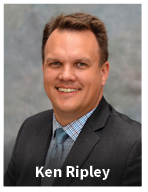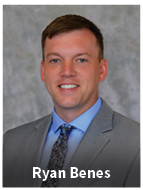FMH experts Ryan Benes and Ken Ripley share how to combine these products for up to 95% coverage with highlights from this featured FMH InsureCast episode.
How does the Supplemental Coverage Option (SCO) work? 
Ken : SCO is tied to the yield performance of the county, so it’s not paying based on the producer’s own yield. It covers from whatever multi-peril level you have up to the 86% level. But say you're not excited about the total cost of that product; you could do a 50% price, for example, to have a higher trigger for a little bit less cost.
Ryan : There are some drawbacks to the product, like relying on the county yield to trigger an indemnity and having to wait at least six months longer to get a payment. But since we're usually buying these as a supplement to what we already have guaranteed individually with a 75% or 80% policy, we can stand to wait for that small payment until June. It’s also worth noting that SCO can’t be bought on acres where you’ve already enrolled in the ARC program with FSA.
How is the Enhanced Coverage Option (ECO) different from SCO?
Ken : The difference between the products are the coverage levels. There are two options for what band of coverage you can buy: ECO covers from 86 up to 90%, or 86 up to 95%. The 95% coverage level is by far the most popular for producers because they get the higher trigger. Like I mentioned before with SCO, you still can do a percent of price to make it more affordable. We have several producers that bought it at the minimum, which is 50% of the price.
How do FMH’s exclusive supplemental products (ECO+™ and SCO+™) work alongside ECO and SCO?
 Ryan : I can buy ECO+ and SCO+ for that same band of coverage as ECO and SCO.
And effectively, I then have individual instead of county-level coverage from 95
down to 86% on optional units, and it doesn't mean we have to have optional units
on our underlying plan – it's just that top-end coverage. We're going to get the better of those payments that are generated because of my individual loss or the
county.
Ryan : I can buy ECO+ and SCO+ for that same band of coverage as ECO and SCO.
And effectively, I then have individual instead of county-level coverage from 95
down to 86% on optional units, and it doesn't mean we have to have optional units
on our underlying plan – it's just that top-end coverage. We're going to get the better of those payments that are generated because of my individual loss or the
county.
Why would a producer need supplemental products?
Ryan : We are in a price environment where margins have become tighter. We really need to focus in on what our input costs are and how many dollars a producer can guarantee through crop insurance. If we're not guaranteeing enough to cover inputs or whatever level of risk tolerance that we have, then supplemental products are a solution.
SCO+™, ECO+™, and RAMP products may not be available in all states. Please contact your FMH sales manager for more information.


